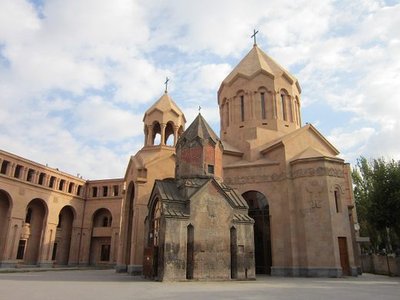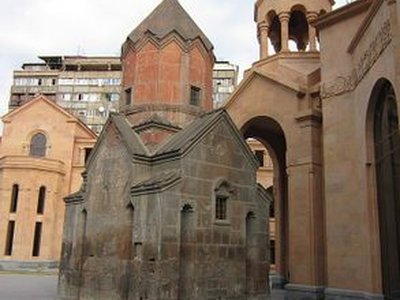Katoghike Church


Although this small Armenian church
has been around since 1264, it has been lost, forgotten, or invisible for much of its long and strange history.
The first time the church was lost was in 1695, when a three-nave tuff stone basilica named the Katoghike Church was constructed attached to the western side of the original medieval church. In time, the old church became fully incorporated into the new basilica, and eventually, the little historic gem inside the complex was forgotten entirely.
Centuries later, in 1936, the Soviet government ordered the demolition of the basilica, and in the process the 13th-century church was uncovered. Protests by the public and archaeologists led authorities to reverse course and allow the original structure to be preserved near a prominent corner of
Yerevan
. Further research revealed that it was originally called St. Atsvatsatsin Church and is one of the few structures to survive the major earthquake that devasted the city in the 17th century, making it likely the oldest surviving church in the Armenian capital.
The Soviet authorities still, however, did not like the idea of this highly visible house of God, and so they built a linguistics institute wrapping around it, completely obscuring the little church from view, despite being situated at the corner of two busy streets. For decades it sat ignored and forgotten, hidden from the city life happening just a few feet away.
With the collapse of the USSR and the end of the restrictions on religion, the medieval church was rediscovered—again—and reopened, retaining the name Katoghike Church. Eventually, the linguistics institute that had encased the church was demolished, and today the 13th-century structure is surrounded by a park and once again prominently visible to all who pass by, if somewhat overshadowed by the larger, modern church of St Anna that was later built right behind it.